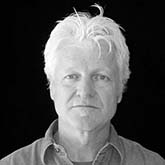
Daniel Collins
Senior Global Futures Scholar, Julie Ann Wrigley Global Futures Laboratory
School of Art
Arizona State University
PO Box 871505
Tempe, AZ 85287-1505
Titles
- Senior Global Futures Scholar, Julie Ann Wrigley Global Futures Laboratory
- Professor, School of Art, Herberger Institute for Design and the Arts
- Affiliated Faculty, Center for Biodiversity Outcomes, Global Institute of Sustainability and Innovation
- Co-Director, PRISM (ASU)
Biography
Daniel Lee Collins, MFA, PhD is a Professor in the School of Art in the Herberger Institute for Design and the Arts. He joined the School of Art faculty at Arizona State University in 1989. He is founding Co-Director of the PRISM lab (a 3D visualization and prototyping facility) and heads the foundation art program in the School of Art (artCore).
Collins has developed innovative, online curricula for teaching art and design as well as computer-aided visualization. He has served as a PI on a number of successful projects focused on the utilization of digital media for 3D visualization, prototyping, and archiving in collaboration with a range of discipline-based scientists. His lab, PRISM, created the prototype for the Decision Theater and he was involved in many early conversations surrounding the visualization of the aquifer and water-use in the greater Phoenix metro area. He has also collaborated with scientists in DCDC on creating interactive displays of the heat-island effect in Phoenix (for the Tempe History Museum) as well as research and public programming related to the history and ecology of the Colorado River Basin.
Collins received his PhD in Interdisciplinary Humanities/Curriculum and Instruction from Arizona State University, his MFA in Experimental Systems from UCLA, an MA in Education from Stanford University, and a BA in Studio Practice and Art History from the University of California, Davis. He serves as president of the Board of Trustees of the Telluride Institute, a 501(c)3 non-profit in the San Juan Mountains of Colorado, and has helped develop and administer an environmental education program that delivers experiential, place-based learning to all of the public schools in the San Miguel River system. His recent work focuses on interactive media, participatory research methods, and community mapping. He has created a number of interactive maps (with Gene Cooper) for nationally recognized museums, including the Exploratorium in San Francisco and the Arizona Science Center in Phoenix. These interactive environmental maps capture a variety of environmental and social factors including geology, animal habitat, land cover, impacts of precipitation and changing global temperatures, tidal flow (SF Bay project), as well as changing demographics, land-use, and urban sprawl. He created a participatory “incident map” entitled Atlas of the Rio Salado for a traveling Smithsonian exhibition entitled The Green Revolution. He was the lead PI on funded initiatives to the EPA Environmental Education directorate entitled: SCAPE (Sustainable Communities and Place-based Education) in the Colorado River Basin, a curriculum for 20+ schools across the Mountain West. He is currently working on a project in the Paradox Valley in SW Colorado that combines site-specific sculptural interventions with collaborative research into desalination and water scarcity.
Education
- PhD, Interdisciplinary Humanities/Curriculum and Instruction, Arizona State University, 2009
- MFA, Sculpture and New Genres, University of California-Los Angeles, 1984
- MA, Art Education, Stanford University, 1975
- BA, Studio Art and Art History, University of California, 1974
Expertise
Journal Articles
2022
Collins, D. L. 2022. Essay: Teaching MFA students to teach. FATE in Review
2014
Collins, D. L. 2014. Catalog essay: Materialize: 3D printing and rapid prototyping. Materialize Oct.
2009
Collins, D. L. 2009. Essay: Putting theory to work: Building a foundations program for the 21st century. FATE in Review 58-92.
Book Chapters
2011
Collins, D. L. 2011. Instruments of control or pathways for public empowerment. In: Margolis, E. and L. Pauwels eds., Digital Mapping as Visual Research. Sage Publications.
2003
Collins, D. L. 2003. Tracking the cimera. In: Collins, D. L. and S. Britton eds., The Eighth Day: The Transgenic Art of Eduardo Kac. Institute for Studies in the Arts, Arizona State University. Tempe, AZ.
2002
Schurmans, U., D. L. Collins, A. Razdan, A. W. Simon, M. Marzke, P. H. McCartney, D. Van Alfen, G. Jones, M. Zhu, D. Liu, M. Bae, J. Rowe and G. Farin. 2002. Advances in geometric modeling and feature extraction on pots, rocks and bones for representation and query via the internet. Pp. 191-202 In: Burenhult, G. and J. Arvidsson eds., Archaeological Informatics: Pushing the Envelope. Archaeopress. Oxford.
Conference Papers
2013
Collins, D. L. 2013. Community mapping. In: Cleland, K., L. Fisher and R. Harley eds., Proceedings of the 19th International Symposium of Electronic Art. 19th International Symposium of Electronic Art. Sydney, Australia. (link )

